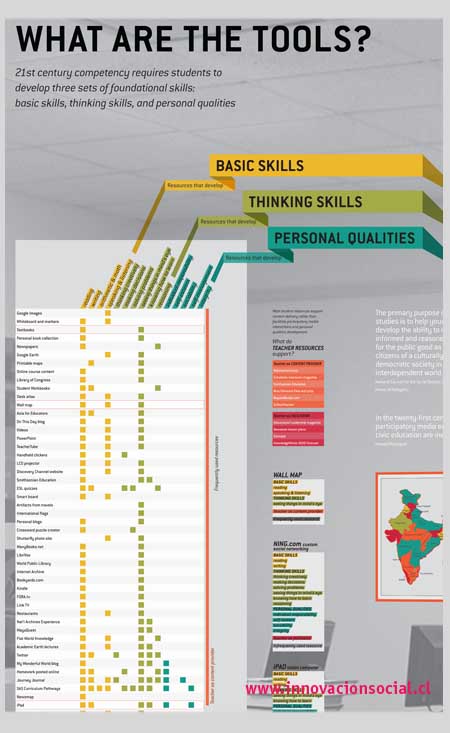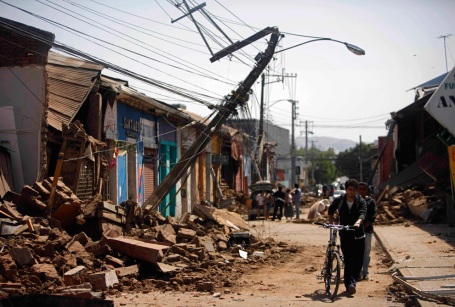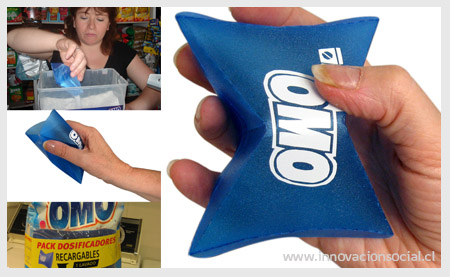Posts filed under ‘Diseño Gráfico/ Graphic Design’
Know your onions, why the digital humanities should give more relevance to the end-user
 Pic: Maite Otondo‘s graduate project at PUC
Pic: Maite Otondo‘s graduate project at PUC
During a Skype call we held with John Unsworth, dean of the graduate school of Library and Information Sciences of the University of Illinois at Urbana-Champaign he highlighted that one of the “missions” of library sciences should be to focus on the information retrieval. Yet, when he says this he indicates that it should be in more ambitious ways. When we deal with the retrieval of information we need to think in who is retrieving and what for.
Even though a humanities study the human condition, the digital humanities, generally, seems to pay little attention to whom they are framing information for. (more…)
Design Thinking in K12 classrooms
A group of Master of Graphic Design students at NC State develop creative ideas for incorporating Design Thinking in North Carolina Middle Schools. Using an interaction design point of view. Here is one example of great applicable ideas to start an educational revolution.
 Picture: LR & TJB
Picture: LR & TJB
By
Laura Rodriguez/MA Graphic Design NCSU
TJ Blanchflower/ MA Graphic Design NCSU
During our graduate studio with design scholar Meredith Davis, we had the privilege of exploring her personal research—the application of design thinking to K-12 classrooms. The outcome was the development of learning materials and technologies that deploy design thinking strategies, specifically for 7th grade science. The first phase of this project was the collaborative research of 6 design students, culminating in a series of large scale posters. During the second phase, we investigated how design thinking strategies could fulfill North Carolina middle school science standards. USING SCENARIOS & OTHER INTERACTION METHODOLOGIES
USING SCENARIOS & OTHER INTERACTION METHODOLOGIES
This process book represents the collaborative and individual development (more…)
Resources for integrating Design Thinking in Education
By: Rebecca Knowe
MGD Candidate NC State University
Featured project in the AIGA 2010 Conference on Education 
Pic: Rebecca’s visual poster synthesizing available media tools 2010
Design thinking has become a popular concept for business leaders to study, and many have written on its potential influence on business strategy. My current graphic design work is taking me into studying a less-known combination—design thinking applied to education. Designing deals with open-ended, contextual problems, and requires thinking abilities far beyond rote memorization.
SUPPORTING THE REQUIREMENTS OF THE 21st CENTURY LABOR MARKET
The twenty-first century labor market requires similar competencies in problem-solving, decision-making, knowing how to learn, self-management, and other skills typically fostered by design thinking. This list of competencies comes from the U.S. Department of Labor’s 1992 SCANS (Secretary’s Commission on Achieving Necessary Skills) study, and it has informed a large part of my research thus far.
Under the  (more…)
(more…)
Design, Power, New Media & Discourse
By Diego Gómez
MA Candidate UCLA
Graphic Designer & Academic Universidad de Chile
Paper presented at the YCT Forum in South Korea, JAN 2010
Download the whole paper here.
If we think about what designers have been doing the last seventy years, one could say that the core task of their duty has been to manage discourses to obtain or maintain the power of something else over a specific group. Some examples of that could be the power of a political ideology over an ethnic group or nation, the power of a car brand over a specific group of people, the power of a rock band over a young generation, or even the power of an aesthetic vision in a culture. Most of the time, especially in the last three decades, designers have been cynical about their role in media, trying to be a neutral agent in the work-flow of mass communication. This has happened probably because many of us were taught in institutions based on the premise that design practice must not have its own discourse but rather it must be an instrument to convey the message of a client in an efficient and beautiful manner. 
In my opinion that previous vision (which it is also a discourse) was influenced by a simplistic interpretation of some McLuhan’s sentences. In which case, (more…)
Terremoto [Earthquake] en Chile-Design for the aftermath
Post in English y Español

[ESP] Para mí el terremoto vivido a lo lejos ha sido algo triste. Siendo un académico y profesional del diseño interesado en desarrollar al diseño para desarrollar a las personas, me siento de manos atadas. Coordinar ayuda es lo que puedo hacer desde la lejanía [estoy en EEUU realizando estudios de doctorado]. Acá propongo dos soluciones o principios, que claro, no son de mi propiedad intelectual, pero que resuelven dos de los principales problemas que han llegado a mis oídos: 1) La reconstrucción de casas en zonas devastadas [me llegó la petición desde LOLOL] 2) Filtrar el agua para poder beberla en zonas en que aun no se a re-establecido el servicio [sobre todo zonas costeras]. Lo más importante es que son cosas VIABLES para realizar, costo mínimo, y sólo requieren un poco de expertise para ponerlos a andar. [ENG] This post will be in English and Spanish in order to help out in the instructions and ideas to help my beloved country, Chile. CNN stopped showing the real images of the disaster once they got news that “Santiago was kind of OK”. People in the Northern hemisphere lost interest and they didn’t get to see the problems with the Tsunamis in southern regions. An 8.8 Earthquake, with various Tsunamis IS A CATASTROPHE. And designers can do something in order to help. Here are two solutions, not mine, but that can be re-adapted to the Chilean actual context. One solution is Brazilian, and the other one has to do with the same system that some rural zones in Chile use for filtering water.
Picture: Roberto Candia
2 PROBLEMS 2 SOLUTIONS
[1] PROBLEMA: RECONSTRUCCIÓN DE TECHOS Y CASAS [La lluvia caerá]
SOLUCIÓN: crear techos y membranas efímeras para poder protegerse de la lluvia o el sol/ Ceiling and house recon struction: creation of ephimeral membranes to protect individuals from the sun and rain.
struction: creation of ephimeral membranes to protect individuals from the sun and rain.
[ESP] Este es un proyecto concebido en Brasil para la Favela do Pilar por alumnos de arquitectura ingleses . Lo importante es que se puede replicar con el uso de plásticos (polipropilenos u otros) y tensores de alambre (firmes por favor) en los lugares de la catástrofe. Mejor si conseguimos que alguien se ponga con telas [Ir a fuente] [ENG] This is a project conceived for Brasil, for Favela do Pilar by a group of architecture students from London. The good thing is that it is applicable for our Chilean community as it can be adapted to be done with polypropylene or some other cheap plastic and wires [Go to source].
Recarga Lavado/ Almacén

Recarga de lavado
Constanza Justiniano
La falta de acceso a servicios y productos hace que los consumidores de la base de la pirámide tengan que pagar más por los productos que requieren en el día a día. Sabiendo esto, Constanza estudia el comportamiento de compra en el barrio. Los almacenes concentran la demanda de compras inmediatas en pequeñas cantidades. Se vuelve a la venta a granel. Un mismo producto puede costar un 40% más por ser comprado parceladamente en un almacén en vez de ser comprado en un supermer¬cado con precios competitivos. Justiniano genera un sistema que consta de un envase plegable que permite comprar una o media recarga de detergente a un costo menor que si es que se comprara directa¬mente en el almacén. El envase cuesta 30 pesos chilenos.
5.0 Evolución del proyecto

20.11.2008 Desarrollo del diseño gráfico que acompaña al producto en copacking. Hasta este momento, la mayor parte del énfasis fue puesto en el diseño del producto mismo (forma, materiales, producción, etc.) y su relación directa con el usuario según su uso, interacción, etc. En este punto es preciso recordar que los proyectos han sido diseñados pensando en que acompañarán a un determinado artículo Unilever a modo de copacking (producto que viene con otro adosado como pack, oferta, promoción) aprovechando el canal de distribución existente en la empresa. Una parte importante de este tipo de estrategias es generar una gráfica efectiva para llegar al usuario. Al diseñar la gráfica de estos productos, se debe considerar que un requerimiento esencial de ella es transmitir de un vistazo a las personas qué son y cuáles son los beneficios que se obtienen al tenerlos. También en algunos casos es necesario un diseño de instrucciones que comunique a los usuarios cómo deben ser usados. Sergio Valderrama, nuestro especialista en packaging, corrige dando indicaciones sobre: usos de tipografía (la no utilización de altas, serif o contornos), colores (el uso de colores que irrumpan en el empaque destacando que es una promoción), mensaje (un mensaje claro que indique el beneficio del producto de regalo).




